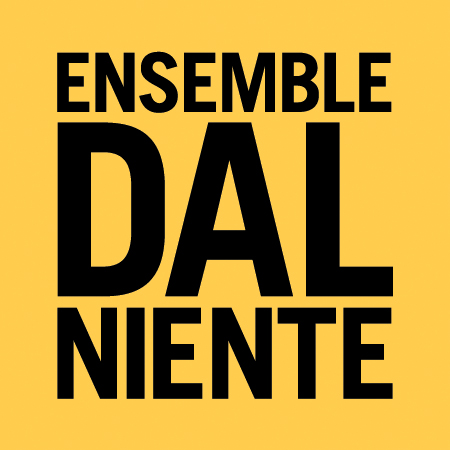Ammie Brod sat down with Ben Melsky to talk about his new record, Ben Melsky / Ensemble Dal Niente, and the process of creating new music for the harp.
So, how did this CD come into being? Did you have a specific idea or goal in mind, or was it a more open-ended process?
Well, in a lot of ways this was a practical project: I commissioned a bunch of pieces, and then I wanted to record them and make a CD.
What about the commissioning process itself? What were you looking for in a collaborator, and what prompted you to reach out to these specific composers?
There’s a few answers to this. First, I wanted to do was work with composers who hadn’t necessarily written a bunch of major parts for the harp but that I knew had written some really imaginative and ‘out there’ stuff for other instruments. The harp as a musical instrument has its own specific set of musical grammars, and I wanted to see what kinds of new languages and material we could come up with by approaching it from more of an outside perspective.
The harp is an instrument with so much historical background, and that can obscure its essential identity as an object that makes sounds. I wanted the harp’s potentials to be more forgrounded than its historical roles and usage. I wanted to find some new ideas, things that made people question how on earth a harp could be creating that sound profile.
In new music we sometimes talk about expanding the vocabulary of an instrument. Is what you’re talking about a way of doing that?
Expanding vocabulary suggests a point of departure, or a home base. I think that starting from that place can really limit the scope of what you can imagine an instrument doing, particularly with an instrument like the harp that has so much historical baggage to deal with. I wanted to figure out ways to work non-linearly and find whole new ways of looking at the instrument instead of beginning with a set of assumptions.
Can you give me some examples of how you did this?
Actually, the first sound on the CD doesn’t sound like a harp at all; it sounds kind of like a muted guiro. Tomas (Gueglio) and I started with the idea of a sound and then messed around on the harp until we found something that created what we wanted, and that became the central technique for the entire piece.
For Alican (Çamcı’s) perde, we started in a different place entirely. Alican took the vocal inflections from a recording of a poem being read, and he mapped them directly onto sounds and techniques from both the flute and the harp. The harp writing in particular is very multidimensional and distinct. How the writing explores the registers and timbres, all based on the inflections of a recitation, is rather remarkable.
I’ve always found harp to be a really fertile medium for extended techniques and interesting physical interactions with objects that aren’t inherently musical. While the instagrammer in me confesses to a weakness for a good photo op (viola+espresso cup=internet gold, for instance), on a musical level I’d love to hear you talk more about the role this plays on your new album.
It’s true that there are a lot of objects in this album. I use everything from superballs and mallets to poster tack and my own harp calluses to create some of these effects. One of my favorite instances of this is in Eliza Brown’s On-dit for harp and voice, where I use a paintbrush on the harp’s strings to create a kind of dialogue with vocalist Amanda DeBoer Bartlett’s breathing. Beyond loving the sound, I like that we can create a conversation between objects from different artistic spheres; paintbrushes are traditionally in the realm of visual art, and using them to create sound and interact with our breath and our bodies like this creates multiple layers of connection, between both objects and ideas. It allows both the performer and the listener to connect to the objects and the sounds they create in uniquely personal ways.
Any last words you want to share with us about this show?
I can’t talk about this album with out quoting Igor Santos’ program note.
""anima" highlights the anthropomorphic properties of both harp and percussion through an interplay between instruments and performer vocalization. For each non-linguistic utterance and articulation there exists an instrumental equivalent, and a continuum between voice and instrument is established at every point. Orchestrated as such, the piece dramatizes the instruments as entities with physical—organic—bodies, in search of some kind of "soul"."
What or where are instruments’ souls? And what does it mean when we add others to the mix? If the soul of a piece is in the playing and the performance, it’s also in the performer and their approach to the material, and the objects creating the sounds. Maybe by thinking about where the soul lies, we can start to reinvent how we create music.
Ben Melsky, Constance Volk, and Alejandro Acierto, Berlin 2019


